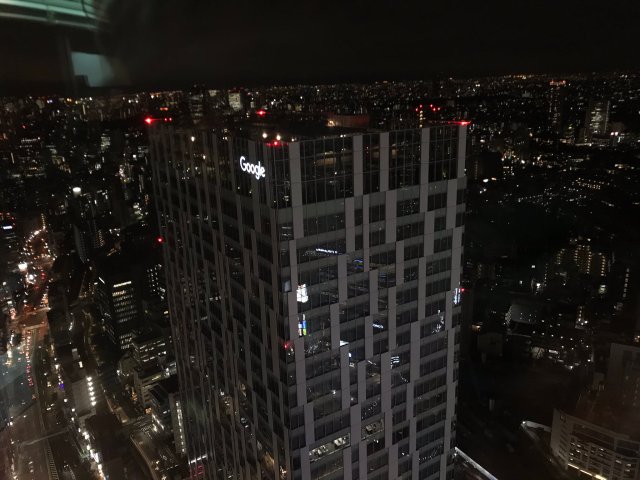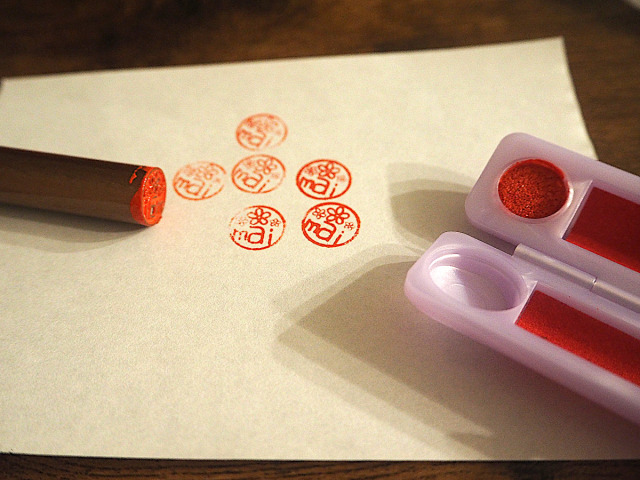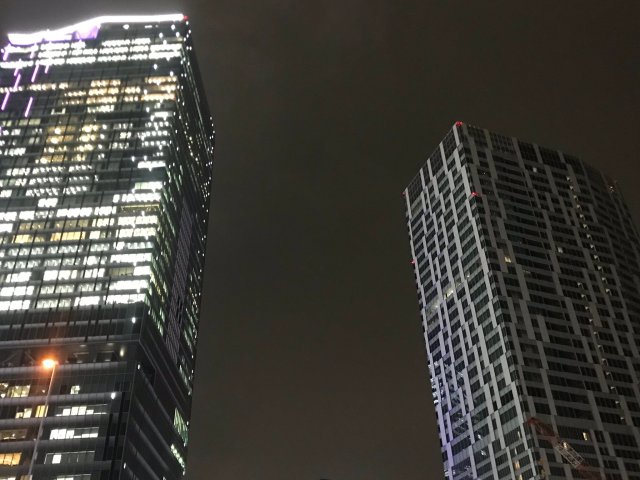
Two office skyscrapers look out over Shibuya together, but inside they’re worlds apart.
A lot has been written about Japanese working culture, where it’s standard practice to put in a lot of unpaid overtime, use your paid holidays on sick days, and only head off home after your boss has left the office.
This focus on prioritising group harmony over efficiency in Japanese workplaces is in stark contrast to the “work smarter not harder” mentality employed by many western companies, and to see it in practice, all you have to do is look up at Japan’s office skyscrapers at night.
That’s what Twitter user Yusaku Arai (@arai_yusaku) did one evening while out at Shibuya at around 6:00 p.m., and what he saw was pretty astonishing. He snapped a photo of the scene, which showed a building on the left where Japanese companies are located, and a building on the right, which houses a western company.
これ今の渋谷なんだけど、
— 新井勇作 📷 Yusaku Arai (@arai_yusaku) October 15, 2020
衝撃の写真。
左側: Cyber Agent & Mixi
右側: Google
働き方改革は、効率改革。リモートワークの実態が激しすぎるな。。。 pic.twitter.com/oET7YbhDZ3
The office building on the left is the new 47-floor Shibuya Scramble Square, which is home to a number of big Japanese companies, including digital advertising company CyberAgent Inc., located on floors 19-23, and Mixi, an online social networking service, located on floors 28-36.
The building on the right? That’s the Shibuya Stream building, which is home to Google.
As you can see, the lights are shining brightly on practically every floor of Shibuya Scramble Square, whereas the Google headquarters, which takes up most of the 35-floor Shibuya Stream building, is so dark you can see the city lights reflecting off the windows, making it look almost transparent.
The reason why it’s so dark in there is because the tech giant has decided to allow its employees to telecommute until the end of June 2021. Opposite Google, though, we can see that telecommuting hasn’t quite caught on in Japan, despite Tokyo Governor Yuriko Koike urging workers to work from home as much as possible back when the pandemic first arrived in the country.
There are a number of reasons why telecommuting isn’t a practical option for a lot of Japanese companies, as the importance of face-to-face meetings and the intricate web of Japanese group dynamics can be hard to nurture and maintain through video calls — how can you trust someone if you don’t know whether they’re wearing business trousers or a fundoshi loincloth? — and there’s also the problem of workers needing to go in to the office to “sign” forms and authenticate work documents using personal seals known as hanko.

The Minister for Administrative Reform, Taro Kono, has made it his mission to abolish the need for personal seals in Japanese workplaces, which many believe to be an outdated practice. Kono is also determined to do away with fax machines, which still play a large role in offices as well.
Kono, and many others, believe that these types of traditional office practices are holding Japan back from truly embracing telecommuting and improving workplace efficiency. It’s not doing much to help the environment either, because as the photo of the two buildings in Shibuya shows, as long as people have to head in to the office every day and stay there until the time is right to head home, buildings in Tokyo will be guzzling up energy and lighting up the night until the last train departs out of the city.
Source: Twitter/@arai_yusaku via Hachima Kikou
Featured image: Twitter/@arai_yusaku
● Want to hear about SoraNews24’s latest articles as soon as they’re published? Follow us on Facebook and Twitter!


 We preview Japan’s first-ever Nintendo Tokyo, Capcom Store and Shibuya Pokémon Centre megastore
We preview Japan’s first-ever Nintendo Tokyo, Capcom Store and Shibuya Pokémon Centre megastore Government survey finds teleworking at least once per week raises Japanese worker happiness level
Government survey finds teleworking at least once per week raises Japanese worker happiness level Tokyo’s most famous Starbucks is closed
Tokyo’s most famous Starbucks is closed Tokyo Hooters now offers rental work spaces, and they’re free for students
Tokyo Hooters now offers rental work spaces, and they’re free for students Telecommute from a ferris wheel at this Japanese amusement park
Telecommute from a ferris wheel at this Japanese amusement park How to order snacks on a Shinkansen bullet train in Japan
How to order snacks on a Shinkansen bullet train in Japan Japan’s new difficult-to-drink-from beer glass protects your liver, but it’s a brutal experience
Japan’s new difficult-to-drink-from beer glass protects your liver, but it’s a brutal experience Demon Slayer: Kimetsu no Yaiba gets new roller coaster attractions and food at Universal Studios Japan
Demon Slayer: Kimetsu no Yaiba gets new roller coaster attractions and food at Universal Studios Japan Burger King Japan suddenly adds Dr. Pepper and Dr. Pepper floats to its menu nationwide
Burger King Japan suddenly adds Dr. Pepper and Dr. Pepper floats to its menu nationwide New Pokémon ice cream, dessert drinks, and cool merch coming to Baskin-Robbins Japan【Pics】
New Pokémon ice cream, dessert drinks, and cool merch coming to Baskin-Robbins Japan【Pics】 New Nintendo Lego kit is a beautiful piece of moving pixel art of Mario and Yoshi【Photos】
New Nintendo Lego kit is a beautiful piece of moving pixel art of Mario and Yoshi【Photos】 New samurai glasses are Japan’s latest weird must-have souvenir
New samurai glasses are Japan’s latest weird must-have souvenir Kyoto Tower mascot termination reveals dark side behind cute Japanese characters
Kyoto Tower mascot termination reveals dark side behind cute Japanese characters Hello, cosmetics! Clinique teams up with Hello Kitty this summer for first-time collaboration
Hello, cosmetics! Clinique teams up with Hello Kitty this summer for first-time collaboration This Nara workshop has been making deer crackers for more than 100 years and offers tours【Photos】
This Nara workshop has been making deer crackers for more than 100 years and offers tours【Photos】 Nintendo history you can feel – Super NES, N64, and GameCube controllers become capsule toys
Nintendo history you can feel – Super NES, N64, and GameCube controllers become capsule toys “The most Delicious Cup Noodle in history” – Japan’s French Cup Noodle wins our heart【Taste test】
“The most Delicious Cup Noodle in history” – Japan’s French Cup Noodle wins our heart【Taste test】 Starbucks releases a cute Frappuccino and Unicorn Cake…but not in Japan
Starbucks releases a cute Frappuccino and Unicorn Cake…but not in Japan McDonald’s Japan’s Soft Twist Tower: A phantom ice cream only sold at select branches
McDonald’s Japan’s Soft Twist Tower: A phantom ice cream only sold at select branches Yabai Ramen: What makes this Japanese ramen so dangerous?
Yabai Ramen: What makes this Japanese ramen so dangerous? Finally! Nintendo Japan expands Switch 8-bit controller sales to everybody, Online member or not
Finally! Nintendo Japan expands Switch 8-bit controller sales to everybody, Online member or not Japanese government wants to build luxury resorts in all national parks for foreign tourists
Japanese government wants to build luxury resorts in all national parks for foreign tourists To combat declining birth rate, Japan to begin offering “Breeding Visas” to foreigners
To combat declining birth rate, Japan to begin offering “Breeding Visas” to foreigners 10 things you should buy at 7-Eleven in Japan
10 things you should buy at 7-Eleven in Japan Studio Ghibli releases anime heroine cosplay dresses that are super comfy to wear
Studio Ghibli releases anime heroine cosplay dresses that are super comfy to wear Woman charged for driving suitcase without a license in Osaka
Woman charged for driving suitcase without a license in Osaka Studio Ghibli unveils My Neighbour Totoro miniature house model
Studio Ghibli unveils My Neighbour Totoro miniature house model Kyoto experiencing problems with foreign tourists not paying for bus fares, but not on purpose
Kyoto experiencing problems with foreign tourists not paying for bus fares, but not on purpose Fighting mild hunger with a Japanese soda that turns into jelly in the stomach【Taste test】
Fighting mild hunger with a Japanese soda that turns into jelly in the stomach【Taste test】 Studio Ghibli’s Howl’s Moving Castle tapestry unveiled in Japan for first time
Studio Ghibli’s Howl’s Moving Castle tapestry unveiled in Japan for first time McDonald’s new Happy Meals offer up cute and practical Sanrio lifestyle goods
McDonald’s new Happy Meals offer up cute and practical Sanrio lifestyle goods Sales of Japan’s most convenient train ticket/shopping payment cards suspended indefinitely
Sales of Japan’s most convenient train ticket/shopping payment cards suspended indefinitely Sold-out Studio Ghibli desktop humidifiers are back so Totoro can help you through the dry season
Sold-out Studio Ghibli desktop humidifiers are back so Totoro can help you through the dry season Japanese government to make first change to romanization spelling rules since the 1950s
Japanese government to make first change to romanization spelling rules since the 1950s Foreigner’s request for help in Tokyo makes us sad for the state of society
Foreigner’s request for help in Tokyo makes us sad for the state of society Ghibli founders Toshio Suzuki and Hayao Miyazaki contribute to Japanese whisky Totoro label design
Ghibli founders Toshio Suzuki and Hayao Miyazaki contribute to Japanese whisky Totoro label design Doraemon found buried at sea as scene from 1993 anime becomes real life【Photos】
Doraemon found buried at sea as scene from 1993 anime becomes real life【Photos】 Tokyo’s most famous Starbucks is closed
Tokyo’s most famous Starbucks is closed Princesses, fruits, and blacksmiths: Study reveals the 30 most unusual family names in Japan
Princesses, fruits, and blacksmiths: Study reveals the 30 most unusual family names in Japan Brand new Shibuya mall and hotel to open in September, promises riverside strolls and tasty food
Brand new Shibuya mall and hotel to open in September, promises riverside strolls and tasty food Japanese overtime work culture captured in new dice collection
Japanese overtime work culture captured in new dice collection First-ever Bon-Odori dance festival to be held at Shibuya scramble crossing for Obon
First-ever Bon-Odori dance festival to be held at Shibuya scramble crossing for Obon New Pokémon card game lounge opening in downtown Tokyo with free drinks, snacks, and loaner decks
New Pokémon card game lounge opening in downtown Tokyo with free drinks, snacks, and loaner decks People in the Tokyo sky, and with no CGI! Photographer’s amazing photo tricks are all in-lens
People in the Tokyo sky, and with no CGI! Photographer’s amazing photo tricks are all in-lens Real-world Delicious in Dungeon manga/anime food waiting for those who brave Tokyo’s Shibuya dungeon
Real-world Delicious in Dungeon manga/anime food waiting for those who brave Tokyo’s Shibuya dungeon Tokyo’s most famous Starbucks building now has a reopening date
Tokyo’s most famous Starbucks building now has a reopening date New Japanese video chat program adds digital makeup to the faces of female telecommuters 【Video】
New Japanese video chat program adds digital makeup to the faces of female telecommuters 【Video】 Final Fantasy developer Square Enix makes working from home a permanent option for employees
Final Fantasy developer Square Enix makes working from home a permanent option for employees Shibuya Station 2019: one step closer to the Neo-Tokyo of our dreams
Shibuya Station 2019: one step closer to the Neo-Tokyo of our dreams Graffiti artist Pikachu plushies coming to brand-new Shibuya Pokémon Center megastore【Photos】
Graffiti artist Pikachu plushies coming to brand-new Shibuya Pokémon Center megastore【Photos】 Nintendo announces first-ever dedicated Nintendo shop in Japan, set to open in Tokyo
Nintendo announces first-ever dedicated Nintendo shop in Japan, set to open in Tokyo Lame tourists’ lame excuse for spray-painting graffiti in Tokyo still gets them arrested
Lame tourists’ lame excuse for spray-painting graffiti in Tokyo still gets them arrested Tokyo’s Shibuya neighborhood bans public Halloween drinking following mayhem
Tokyo’s Shibuya neighborhood bans public Halloween drinking following mayhem Japanese company tells worker he probably doesn’t have coronavirus, to come to work with a fever
Japanese company tells worker he probably doesn’t have coronavirus, to come to work with a fever ‘Power harrassment’ in Japan’s police force blamed for officer’s suicide
‘Power harrassment’ in Japan’s police force blamed for officer’s suicide
Leave a Reply